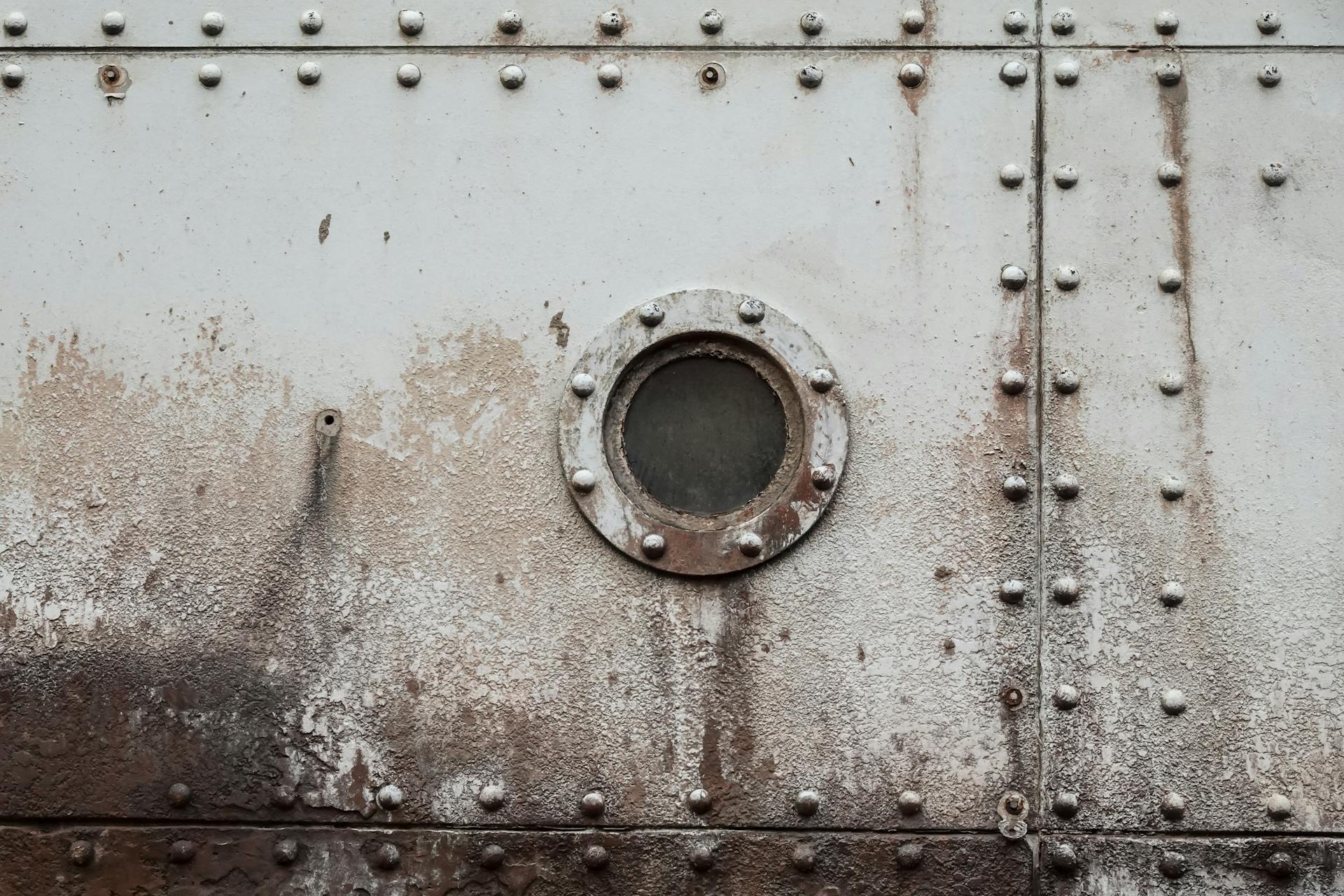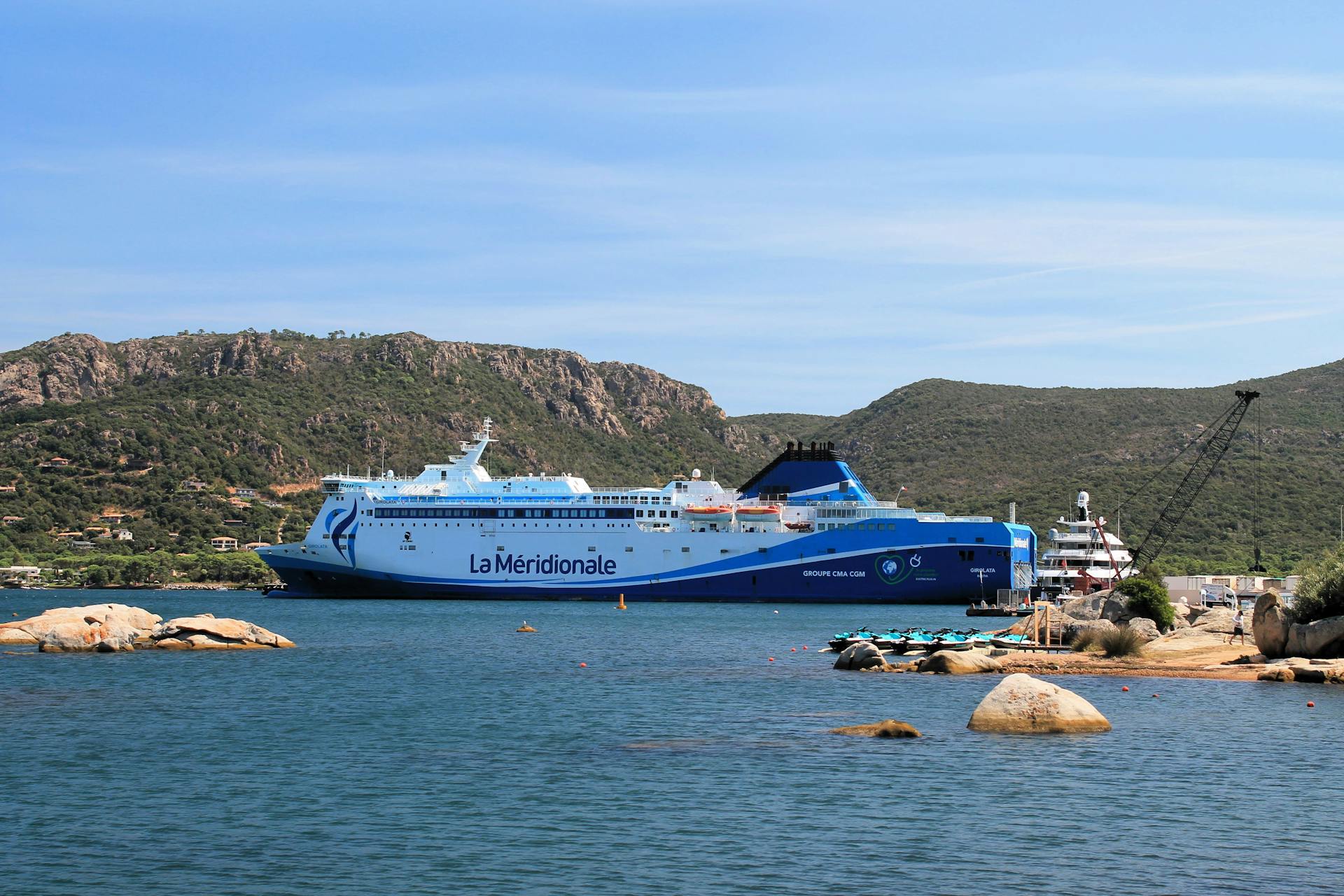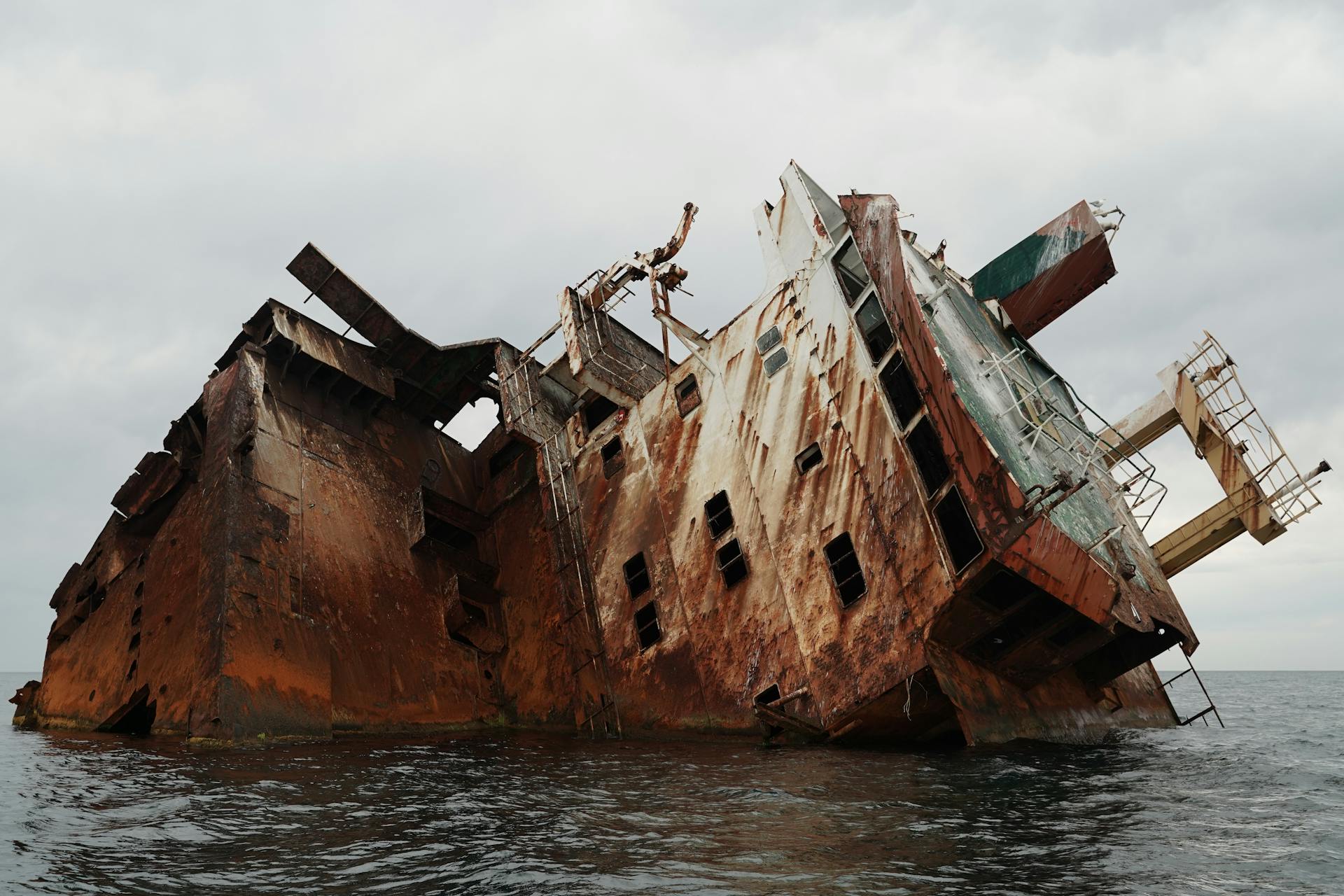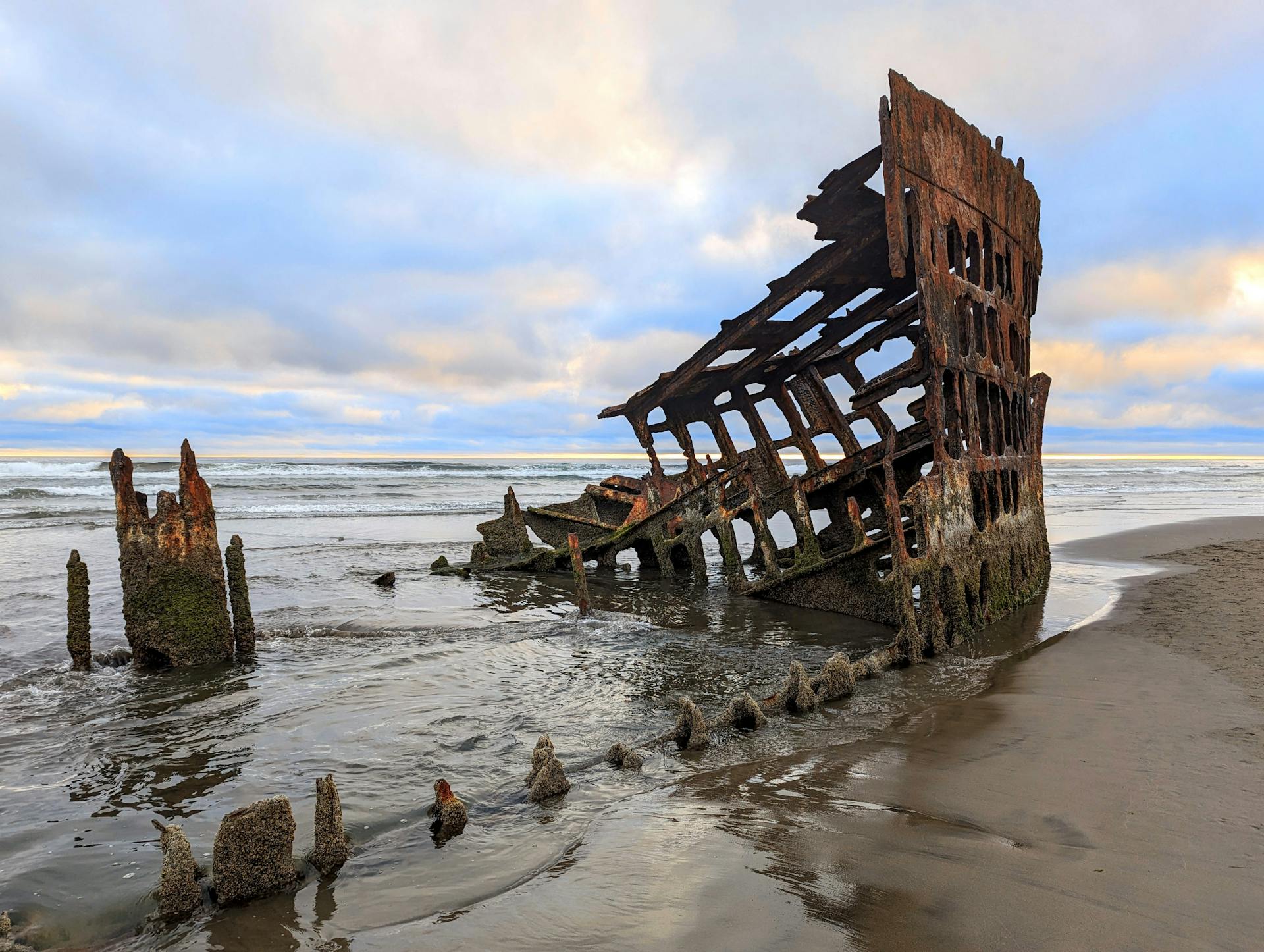
The RMS Asturias was a ship like no other, with a rich history that spans nearly a century. Built in 1925, it was one of the largest and most luxurious ships of its time.
The ship's construction was a massive undertaking, taking over a year to complete. It was designed to be a transatlantic passenger liner, capable of carrying over 2,000 passengers and crew.
The Asturias was a marvel of modern engineering, featuring some of the most advanced technologies of its era. Its massive size and complex systems made it a true behemoth of the sea.
From its maiden voyage in 1927 to its eventual retirement in 1960, the Asturias played a significant role in shaping the history of ocean travel.
Ship Details
The RMS Asturias was a massive ship, measuring 655ft. 8in. in length, 78ft. in breadth, and 45ft. in depth.
It had a gross tonnage of 22,500 and a total ship's complement of 1800 passengers and crew, with six cargo holds and eleven water-tight bulkheads dividing the hull into twelve compartments.
The ship's passenger accommodation was arranged in three classes, with first class passengers enjoying luxurious quarters on six decks amidships.
Here are the ship's dimensions:
The ship's original propulsion system consisted of two 8-cylinder dieselmotors with a combined power of 10,000 ipk (7,500 bhp), but this was later replaced with three boilers connected to six steam turbines in 1934.
History and Operations
RMS Asturias had a significant role in World War II, serving as an Auxiliary cruiser for the Royal Navy. She played a vital part in maritime history.
Asturias was also used as a troop ship, bringing home British soldiers from the Korean War in 1953. The soldiers, mostly from the Gloucestershire Regiment, were greeted by family members and fellow regiment members upon arrival at Southampton.
She was repainted with a distinctive white hull and blue band, with a yellow funnel, to mark her new trooping role in 1954. This change was a significant one, as she went on to serve in the Far East, including her final voyage bringing home the First Battalion of the Royal Sussex Regiment from South Korea in 1957.
Troop Ship
Asturias played a significant role as a troop ship, particularly during the Korean War. She brought UK troops from South Korea to Gibraltar on their way home in September 1953.
In 1954, Asturias was transferred to full-time trooping service, marking a shift from her previous role as an emigrant ship. Her hull was repainted white with a blue band and her funnel was painted yellow for this purpose.
One notable voyage during this period was when she brought home the First Battalion of the Royal Sussex Regiment from South Korea. This voyage took her to various ports in the Far East, including Hong Kong, Singapore, and Colombo in Sri Lanka.
Asturias anchored off Aden and passed through the Suez Canal, which had recently been cleared of blockships after the 1956 Suez Crisis. She then called at Gibraltar before reaching Southampton on 27 August 1957.
Asturias' trooping work was extensive, with much of it taking place in the Far East.
The Final Curtain

The Final Curtain was a bittersweet moment for the Asturias. She was due to be broken up in 1957, but her story didn't quite end there.
The ship played a unique role in the filming of the 1958 movie A Night to Remember. The Rank film company used the port side of the ship for the lowering of the lifeboat scenes while the breakers continued to work on the starboard side.
This unexpected twist allowed the film crew to capture the dramatic scenes they needed. Once filming was finished, the breakers were able to complete the final break-up of the ship.
The Asturias' final days were a poignant reminder that even in decay, there's still value to be found.
Featured Images: pexels.com


